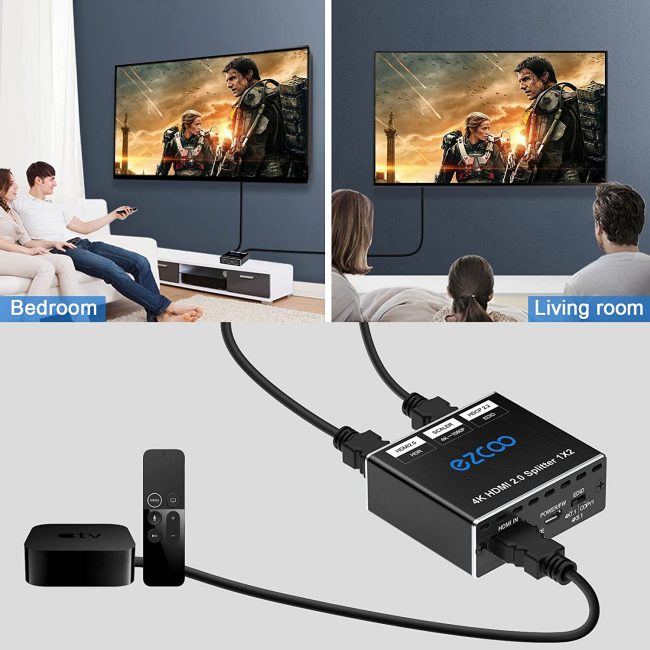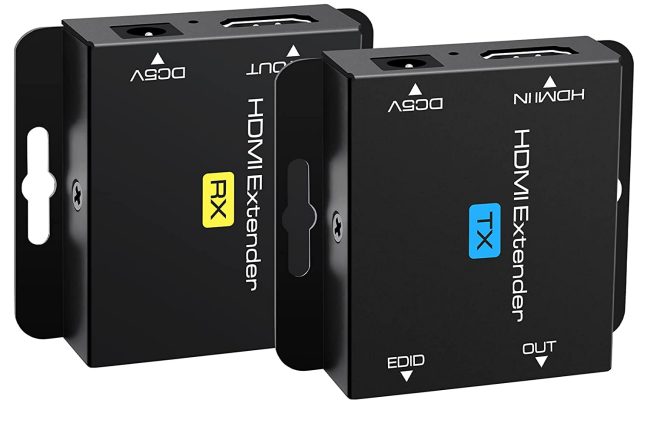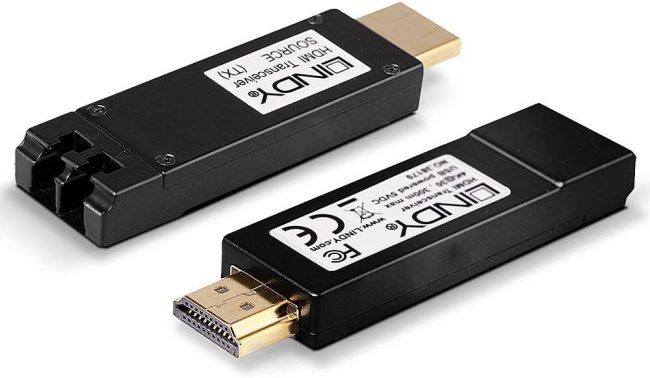Some suggestions for lengthening the HDMI cable used to connect the audio-video source and the multimedia signal player.
It does not happen rarely that the HDMI cable used to interconnect the signal source and the device which then has to manage the incoming multimedia stream (displays the video and plays the audio) are quite distant from each other.
Extend the HDMI cable to cover a greater distance is certainly possible but it is still good to keep in mind some important aspects.
There are several on the market types of cables: We have already seen the differences between HDMI cables. If the distance to cover is not excessive, it is trivially possible to replace the HDMI cable in use with a longer one: there are different lengths on the market.
What is the maximum length of an HDMI cable?
There isn’t one maximum length defined for a cable HDMI: HDMI cables that support resolutions up to 1080p (Full HD) they can reach up to 15 meters; for those who carry signals video 4K it is preferable not to exceed 5 meters in length.
As confirmation that the maximum length of an HDMI cable can depend on various factors, including the HDMI version, the type of cable and the usage environment, just think that the copper HDMI cables passive can also reach 7.5 meters in the case of quality and recently manufactured specimens (with resolutions equal to or close to 4K); the fiber optic HDMI cables they can reach much further pushing the signal even up to 60 meters.
The limitations introduced with the use of an HDMI cable that is too long are evident when you have to transfer the HDCP encoded audio-video signal (High-bandwidth Digital Content Protection). Developed by Intel, HDCP is a protection system that prevents unauthorized copying of high definition digital content.
When using HDMI cables longer than the maximum length recommended for the specific HDMI version, the signal may degrade and lose its integrity. This phenomenon causes problems with HDCP encryption so that the monitor or TV may not play the protected content with the screen starting to flicker.
HDCP coding assumes that the HDMI signal is transmitted securely between the source and the display it reproduces: over the years HDCP has been the target of various attempts to cracking. At the moment only a few specific versions have actually been hacked.
Passive and active HDMI cables
There are passive and active HDMI cables on the market, some of which are made in optic fiber. Unlike traditional passive HDMI cables, the active HDMI cables integrate an active component, such as an amplifier, which increases the power of the signal transmitted along the cable.
The absence of any active component in the passive HDMI cables limits the maximum cable length so that the signal can degrade and become unstable when the transmission distance becomes too great.
Active HDMI cables can be exploited to overcome the problems signal degradation amplifying the signal itself and maintaining picture and sound quality over longer distances. Obviously they are cables anymore expensive which may require an external power source to function properly. Also, due to the presence of the integrated active component, these cables can be more thick e less flexible compared to classic HDMI cables.
Extend the HDMI cable
Per lengthen the HDMI cable and reach more demanding distances, it is possible to exploit different solutions.
A very basic HDMI splitter amplifier not only allows you to connect two lengths of HDMI cable to the ports input/output per extend the distance reachable but also to benefit from accessory functions such as the possibility of “split” the signal (sending it on two displays at the same time) and to carry out the scaling of the image.
Lo scaling allows you to adapt the HDMI video signal to the specifications of the target display. The video stream is thus “scaled” according to the resolution supported by the playback device without compromising quality.

The extender Ethernet they use a clever trick to extend the range of the HDMI signal. We have seen what distances Ethernet cables can cover: here, the possibilities of the latter are exploited with a pair of devices (transmitter or TX, receiver or RX) which on one side house an RJ-45 connector for connecting a cable network port, on the other an HDMI port input/output.
Just buy an HDMI Ethernet extender, connect the network cables to the connected devices the desired distance then the HDMI cable (which can be short) to the source and receiver device. In this case the Ethernet cable is used as the communication medium.

HDMI KVM extenders allow users to control multiple computers using a single keyboard, mouse and monitor combination.
KVM stands for Keyboard, Video, Mouse: Extenders of this type are useful in situations where an HDMI video source needs to be accessed and controlled from a remote location, such as industrial environments, traffic control environments, real-time video transmission environments, and other applications professional.
It should be noted that the TX and RX modules usually require power (in many cases only the TX module must be connected to an electrical outlet).
The extenders they support Cat 6 Ethernet cable or higher allow you to transfer the HDMI audio-video signal up to distances of 150 meters.
Finally, fiber optic HDMI extenders offer the best possible signal quality but are much more expensive and obviously involve the use of a fiber cable between the TX and RX module.
Anyone who knows the properties of optical fiber already knows that theattenuation of the signal is practically non-existent (the optical signal is not dispersed) therefore it is possible to potentially distribute the HDMI signal even kilometers away using these extenders.

As with Ethernet extenders, fiber extenders typically also need power. In some cases, especially for the more compact versions, this is not necessary.
In general, it is inadvisable to use instead extender HDMI WiFi: also available on the market in various models, they are not very suitable for transferring audio-video signals in high definition and are influenced by external interference, such as other wireless networks, household appliances, walls and other obstacles. WiFi extenders can have a negative impact on network speed and stability as they use up some of the available bandwidth to extend signal range. This can cause a speed reduction of downloads and uploads, as well as latency and connection stability problems.
In conclusion, it is always preferable to opt for a wired HDMI connection.
